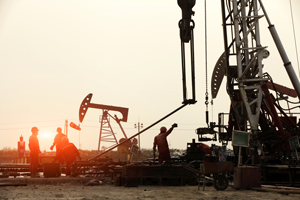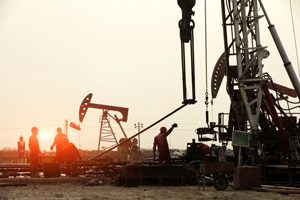 In the past few years, oil production in the United States has skyrocketed. In fact, the U.S. is out-producing many OPEC countries and is currently on track to become one of the largest oil-producing countries in the world, alongside Russia and Saudi Arabia.[1] The top oil producing region in the U.S. is known as the Permian Basin, which includes parts of Texas and New Mexico. Other major oil-producing states include Colorado, Oklahoma, North Dakota, Alaska, and California.[2]
In the past few years, oil production in the United States has skyrocketed. In fact, the U.S. is out-producing many OPEC countries and is currently on track to become one of the largest oil-producing countries in the world, alongside Russia and Saudi Arabia.[1] The top oil producing region in the U.S. is known as the Permian Basin, which includes parts of Texas and New Mexico. Other major oil-producing states include Colorado, Oklahoma, North Dakota, Alaska, and California.[2]
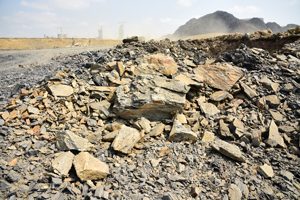 Particularly in the U.S., much of the oil and natural gas stored below the earth’s surface is located in shale rock and is difficult to capture using traditional drilling methods.[3] As a result, more advanced technology and extraction methods have grown in popularity in order to meet the constant demand for fossil fuels. A means of extraction that has grown rapidly in the past few years is hydraulic fracturing, or fracking. Fracking releases oil and natural gas from shale rocks that “lack adequate pore space for these fluids to flow to a well.” During the fracking process, a well is drilled down vertically to the shale and then drilled horizontally through the shale. Then, water, chemicals, and a proppant (usually frac sand) are pumped into the well. The pressure in the well is increased until “it is high enough to exceed the breaking point of the surrounding rocks,” which fractures the shale. Water enters the new fractures created by the high pressure, carrying the chemicals and proppant with it. Next, the water and chemicals are pumped out, leaving the proppant behind to prop the fractures open. Finally, “the new fractures in the rock, propped open by the durable sand grains, form a network of pore space that allows petroleum fluids [and natural gas] to flow out of the rock and into the well.”[4]
Particularly in the U.S., much of the oil and natural gas stored below the earth’s surface is located in shale rock and is difficult to capture using traditional drilling methods.[3] As a result, more advanced technology and extraction methods have grown in popularity in order to meet the constant demand for fossil fuels. A means of extraction that has grown rapidly in the past few years is hydraulic fracturing, or fracking. Fracking releases oil and natural gas from shale rocks that “lack adequate pore space for these fluids to flow to a well.” During the fracking process, a well is drilled down vertically to the shale and then drilled horizontally through the shale. Then, water, chemicals, and a proppant (usually frac sand) are pumped into the well. The pressure in the well is increased until “it is high enough to exceed the breaking point of the surrounding rocks,” which fractures the shale. Water enters the new fractures created by the high pressure, carrying the chemicals and proppant with it. Next, the water and chemicals are pumped out, leaving the proppant behind to prop the fractures open. Finally, “the new fractures in the rock, propped open by the durable sand grains, form a network of pore space that allows petroleum fluids [and natural gas] to flow out of the rock and into the well.”[4]
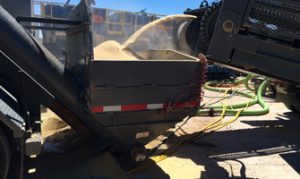 While the exact chemical composition of the fracking fluid depends on the fracking company and the fracking location, frac sand is the preferred proppant in most applications. Frac sand is crush-resistant, high-purity quartz that can maintain the fractures in the shale long after the high pressure and chemicals are gone.
While the exact chemical composition of the fracking fluid depends on the fracking company and the fracking location, frac sand is the preferred proppant in most applications. Frac sand is crush-resistant, high-purity quartz that can maintain the fractures in the shale long after the high pressure and chemicals are gone. 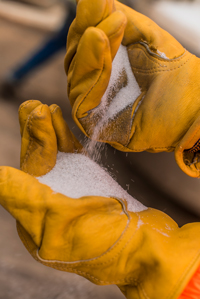 Frac sand is mined from sandstone rock, which is most common in Wisconsin, Minnesota, and other Midwestern states far from the shale-rich fracking regions. After frac sand is mined, it is washed to remove excess particles. The sand then undergoes a two-fold drying process: first, it is dried outside to allow excess water to evaporate. Second, it is dried in an air dryer to remove all moisture. Then, the dry sand is screened and the particles are separated by size for use in different applications. Finally, the sand is shipped by rail to the customer. Some mines have their own frac sand processing plants, while others share their plants with other mines due to the high cost of building such a facility.[5]
Frac sand is mined from sandstone rock, which is most common in Wisconsin, Minnesota, and other Midwestern states far from the shale-rich fracking regions. After frac sand is mined, it is washed to remove excess particles. The sand then undergoes a two-fold drying process: first, it is dried outside to allow excess water to evaporate. Second, it is dried in an air dryer to remove all moisture. Then, the dry sand is screened and the particles are separated by size for use in different applications. Finally, the sand is shipped by rail to the customer. Some mines have their own frac sand processing plants, while others share their plants with other mines due to the high cost of building such a facility.[5]
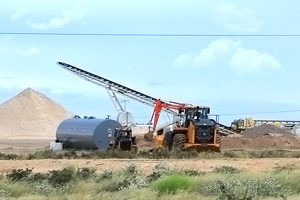 As fracking continues to be a popular means of fossil fuel extraction, the need for rigs and mines will increase, as will the need for dependable instrumentation to manage them. In mining, flow switches protect pumps and motors from low flow or no flow situations, temperature and process controllers allow for management of conditions in dryers, and both single and differential pressure transmitters can quickly notify workers if a corrective action is needed. For similar reasons, it is important to accurately measure pressure, liquid flow, and temperature during the fracking process. Throughout both the mining and fracking processes, reliable instrumentation supported by proper regulatory certifications is necessary to ensure the effectiveness and efficiency of the systems as well as the safety of the workers attending to them.
As fracking continues to be a popular means of fossil fuel extraction, the need for rigs and mines will increase, as will the need for dependable instrumentation to manage them. In mining, flow switches protect pumps and motors from low flow or no flow situations, temperature and process controllers allow for management of conditions in dryers, and both single and differential pressure transmitters can quickly notify workers if a corrective action is needed. For similar reasons, it is important to accurately measure pressure, liquid flow, and temperature during the fracking process. Throughout both the mining and fracking processes, reliable instrumentation supported by proper regulatory certifications is necessary to ensure the effectiveness and efficiency of the systems as well as the safety of the workers attending to them.
[1] https://www.cnbc.com/2018/06/13/permian-will-soon-pump-enough-oil-to-be-opecs-2nd-biggest-producer.html.
[2]https://www.eia.gov/todayinenergy/detail.php?id=36936. https://www.eia.gov/todayinenergy/detail.php?id=35632.
[3] https://geology.com/rocks/shale.shtml.

